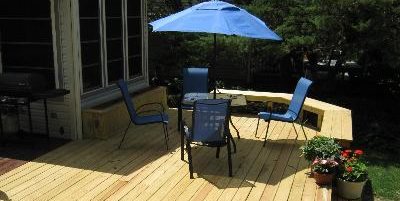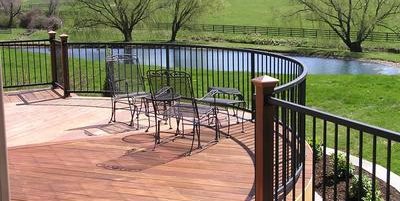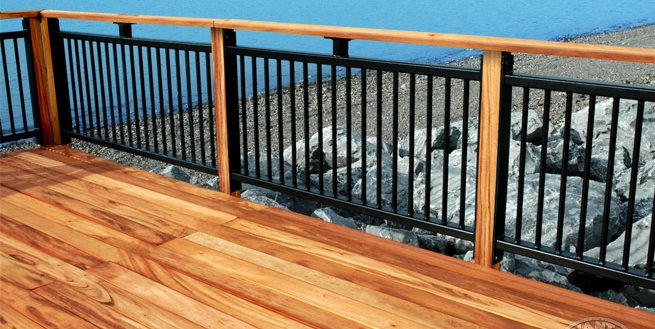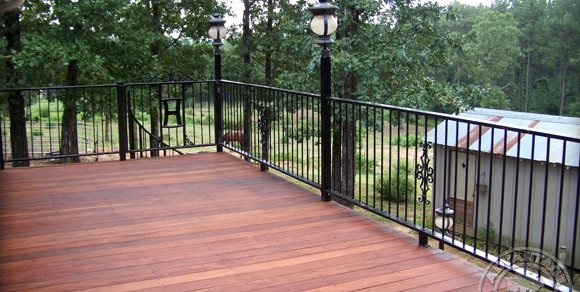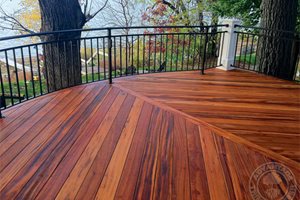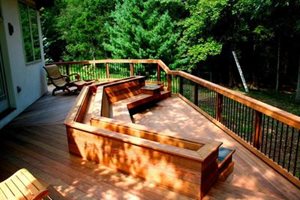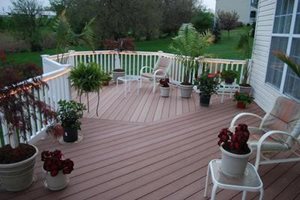Wood Decks
The pros and cons of using different kinds of wood to build your deckThe options in wood range from inexpensive pressure-treated lumber all the way up to premium tropical hardwoods such as ipe, and the construction techniques, maintenance and initial expense vary widely between each material. Here, decking professionals give their tips on choosing the right type of wood for your project.
Wood Options for Decks
Pressure-treated
The options for pressure-treated wood vary from region to region, and the quality varies as well. “We use a premium grade pressure-treated southern yellow pine,” says Baron Biedenweg of Archadeck of Fort Wayne in Ft. Wayne, IN. “Splitting and warping is rare, and there are very few knots,” he says. Bobby Parks of Peachtree Decks & Porches in Alpharetta, GA uses a pressure-treated product that is kiln-dried after treatment (KDAT). This reduces swelling and shrinkage and makes for a more consistent product.
Pressure-treated wood is the least costly wood you can use for building a deck. However, it is also one of the most high-maintenance materials. To care for a pressure-treated deck, Biedenweg suggests cleaning, lightly sanding, and staining or sealing the deck every one to two years. A pressure-treated deck will last 10 to 15 years if treated well.
Cedar and redwood
Cedar and redwood are midrange options that last a little longer than pressure-treated wood. Some people prefer the darker color and more consistent character of cedar or redwood over pressure-treated wood. Both woods are more costly than pressure-treated, yet still require the same maintenance. For that reason, “cedar’s not so popular anymore,” says Biedenweg. Most of Biedenweg’s clients go with an inexpensive pressure-treated deck, or spring for composite or ipe.
Ipe
Ipe is the most expensive option available for decks, costing more than composite and other types of wood. “It’s exotic-looking, has a rich warm color and a unique grain,” says Dan Ivancic of Advantage Trim & Lumber Co. in Buffalo, NY. “You can tell you’re looking at a high-end deck.” Besides good looks, the main advantage of ipe decking is that it can last 30 to 50 years. The Atlantic City Boardwalk and many docks in Florida use ipe as a long-lasting material. It’s not only resistant to coastal conditions, but also tolerates ice and snow with ease.
The disadvantage to using ipe is that in order to keep the rich brown color, you’ll need to oil the wood every one to two years with UV-inhibiting oil. “I use a paint roller with an extendable handle,” says Ivancic. “The oil soaks in, and doesn’t sit on top of the wood.” He just removes any excess with a rag. Of course, if you like the gray color of weathered ipe, no maintenance is required at all. The oiling isn’t necessary for longevity, only to preserve the color.
Ipe is more difficult to install than composites and softer types of wood. You’ll need to have your wood pre-drilled, use carbide-tipped saw blades to cut it, and select stainless steel screws and fasteners, as cheaper metals can oxidize and stain tropical hardwoods. The sheer weight of the wood also increases the time it takes to install. That said, once you have an ipe deck, you won’t have to think much about repair or replacement as it’s resistant to scratches, rot and warping.
Other tropical hardwoods
While ipe is the most well-known tropical hardwood, it’s not the only game in town. Other varieties of tropical hardwood can get you the same results with a lower price tag, because they are less well-known and therefore have less demand.
Cumaru
is similar to ipe in that it’s a long-lasting choice with a rich color, slightly more reddish than the deep brown of oiled ipe.Tigerwood
has a reddish-orange color with black streaking just like a tiger’s stripes, and while it’s not as hard of a wood as ipe and cumaru, it can last over 25 years.Garapa
is a golden yellow color and will last 25 years or more.Massaranduba
has the deep red color you’d expect from a Brazilian redwood, and will last 20 years on up.
Wood or Composite?
If you have a low budget, you will probably end up using an inexpensive option such as pressure-treated wood. However, if there’s enough room in the budget to select the material of your choice, you may find yourself struggling to decide between capped composite or a tropical hardwood. Here are some issues to consider when comparing these products.

 Backyards
Backyards
 Front Yards
Front Yards
